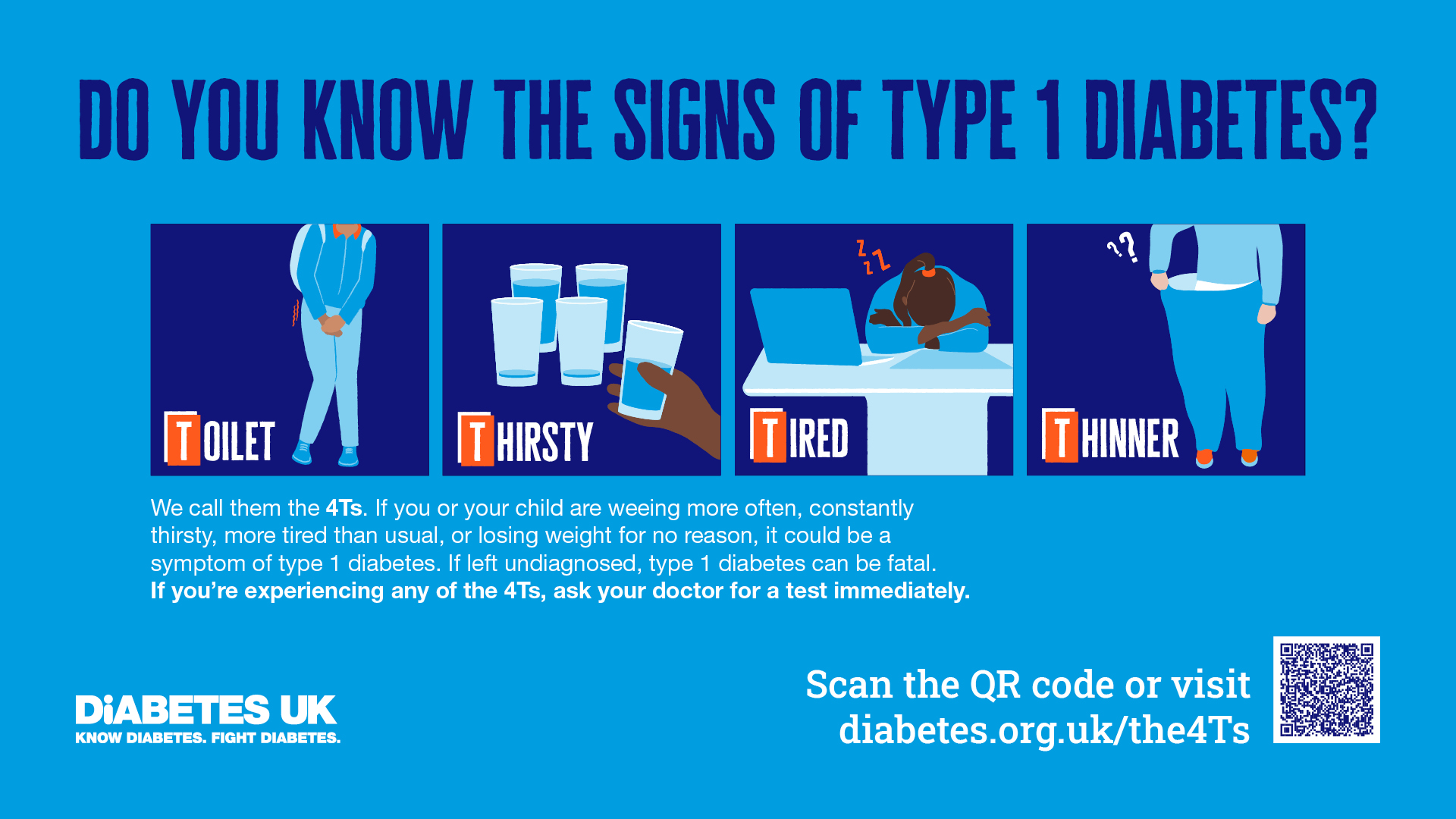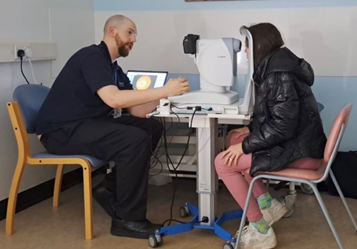Diabetes
Diabetes is a lifelong condition that causes a person’s blood sugar (glucose) level to become too high.
There are two main types of diabetes. Type 1 diabetes is the most common type of diabetes in children and young people. Type 2 diabetes is usually seen in adults but more young people are developing it.
The symptoms of diabetes are:
- Feeling very thirsty
- Weeing more often
- Losing weight
- Feeling very tired
 If you are concerned your child may have diabetes speak to your GP urgently today. They will be able to check your child’s blood sugar level with a finger prick blood test.
If you are concerned your child may have diabetes speak to your GP urgently today. They will be able to check your child’s blood sugar level with a finger prick blood test.
Diabetic eye screening
As part of Diabetes care, your child will be invited for screening appointments from the age of 12.
If your child has Diabetes, their eyes can be at risk of damage from diabetic retinopathy. Screening can detect the condition early before your child notices any changes to their vision.
 We put drops in their eyes to temporarily make their pupils larger. You may find that the drops briefly sting.
We put drops in their eyes to temporarily make their pupils larger. You may find that the drops briefly sting.- We take photographs of the back of the eyes. The camera does not come into contact with the eyes. We send the photographs to an expert to review.
- The appointment will last around 30 minutes.
- We aim to send a letter to you and your GP within 3 weeks letting you know the screening results.
Remember: eye screening is just a part of managing diabetes and diabetic retinopathy is treatable, especially if it is caught early.
Type 1 diabetes
- Type 1 diabetes is an autoimmune condition in which the body’s own defence system (immune system) attacks the cells in the pancreas which produce insulin.
- We do not know what causes type 1 diabetes. It is not linked to lifestyle factors.
- There is no cure and it cannot be prevented.
- Type 1 diabetes is managed with injections of insulin.
Type 1 diabetes can develop quickly over days or weeks. It is important for diabetes to be diagnosed and treated urgently, to prevent children and young people becoming seriously unwell.
Type 1 diabetes is not common in children and is not always considered when children see a health professional.
If you think your child may have diabetes ask your GP to do a finger prick and urine test. If these results suggest diabetes they will be sent to the hospital the same day to see a paediatrician.
Type 2 diabetes
- Type 2 diabetes is where the body’s cells do not react to insulin or the body does not make enough insulin.
- It is not an autoimmune condition.
- There are several risk factors for developing type 2 diabetes. These include ethnicity, genetics and lifestyle.
- You can help prevent and manage type 2 diabetes with healthy eating, regular exercise and achieving a healthy body weight.
- Tablets and insulin injections may also be needed to manage type 2 diabetes.
- Your local community pharmacist can give free lifestyle advice and advice about medication by booking a new medicine service consultation.
- Type 2 diabetes can develop over weeks or months. The symptoms may be less obvious compared to type 1 diabetes.



